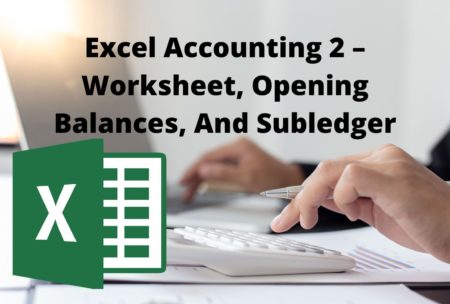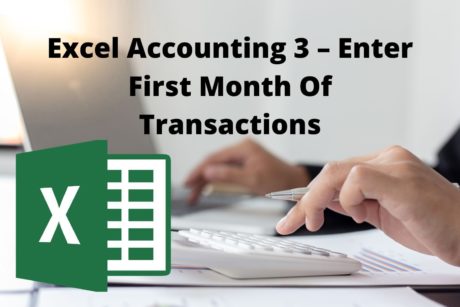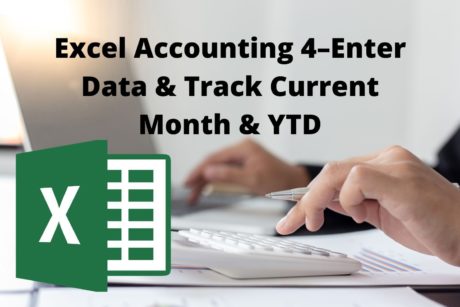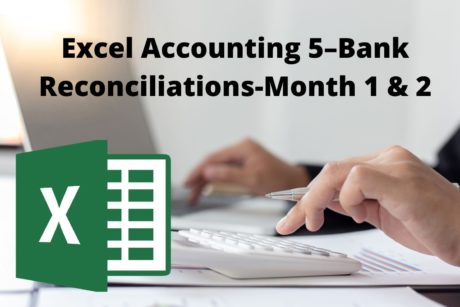Learn how to set up an accounting system in Excel and add beginning balances from a Certified Public Accountant. Read more.
Robert (Bob) Steele CPA, CGMA, M.S. Tax, CPI
Access all courses in our library for only $9/month with All Access Pass
Get Started with All Access PassBuy Only This CourseAbout This Course
Who this course is for:
- Anybody who wants to learn accounting
- Anybody who wants to learn Microsoft Excel
- Accounting and business students
What you’ll learn:
- How to create an accounting system in Excel
- How to enter beginning account balances into a new accounting system
- How to navigate Microsoft Excel
- How to enter beginning balances for inventory, accounts receivable, and accounts payable and create an accompanying subsidiary ledger
Requirements:
- None. If you do not have access to Microsoft Excel, you can use Google Sheets or another electronic spreadsheet program.
In this course, we will create an accounting system starting from a blank Excel worksheet and add beginning balances to our accounts.
Learners will learn how to navigate Microsoft Excel as well as how to create a well-designed accounting worksheet, complete with a general journal, trial balance, general ledger, and subsidiary ledgers for accounts receivable, accounts payable, and inventory.
Excel is a very good tool to learn accounting because it is much more transparent than a database program, like accounting software QuickBooks.
For most new steps in the process, you will have access to a downloadable Excel workbook, containing at least two tabs, one with the answer, the new steps being completed, the other starting out where the prior presentation left off.
Once our accounting system using an Excel worksheet is set up, we will add journal entries to enter beginning balances to our accounts, imagining we are moving from a prior accounting system to our new Excel worksheet system.
When adding the beginning inventory balance to the chart of accounts, we will also add an inventory subsidiary ledger, reporting inventory by item and unit, as well as by cost.
As we add the beginning accounts receivable balance to the chart of accounts, we will also add the accounts receivable subsidiary ledger, showing the money owed to the company by the customer.
And when we add the accounts payable balance to the chart of accounts, we will add the accounts payable subsidiary ledger, reporting the money owed by the company to vendors.
Our Promise to You
By the end of this course, you will have learned to set up an accounting system in Excel.
10 Day Money Back Guarantee. If you are unsatisfied for any reason, simply contact us and we’ll give you a full refund. No questions asked.
Get started today!
Course Curriculum
| Section 1 - Create Worksheet For New Company Accounting Transactions | |||
| Excel Accounting 2 – Downloadable Worksheets | 00:00:00 | ||
| 6010 Set Up Excel Worksheet | 00:00:00 | ||
| 6012 Set Up Excel Worksheet 2 | 00:00:00 | ||
| 6014 Set Up Excel Worksheet 3 | 00:00:00 | ||
| 6016 Set Up Excel Worksheet 4 | 00:00:00 | ||
| Section 2 - Adding Inventory Items And Related Inventory Account Balances | |||
| 6300 Inventory And Inventory Subsidiary Ledger | 00:00:00 | ||
| Section 3 - Add Customers, Add Vendors, And Accounts Receivable And Accounts Payable Balances | |||
| 6340 Accounts Receivable And Subsidiary Ledger | 00:00:00 | ||
| 6360 Accounts Payable And Subsidiary Ledger | 00:00:00 | ||
| 6362 Financial Statements | 00:00:00 | ||
| Section 4 - Add Opening Account Balances | |||
| 6380 Add New Accounts And Opening Balances | 00:00:00 | ||
| 6383 Adjust Beginning Balances In Worksheet For Current Period Data Input | 00:00:00 | ||
About This Course
Who this course is for:
- Anybody who wants to learn accounting
- Anybody who wants to learn Microsoft Excel
- Accounting and business students
What you’ll learn:
- How to create an accounting system in Excel
- How to enter beginning account balances into a new accounting system
- How to navigate Microsoft Excel
- How to enter beginning balances for inventory, accounts receivable, and accounts payable and create an accompanying subsidiary ledger
Requirements:
- None. If you do not have access to Microsoft Excel, you can use Google Sheets or another electronic spreadsheet program.
In this course, we will create an accounting system starting from a blank Excel worksheet and add beginning balances to our accounts.
Learners will learn how to navigate Microsoft Excel as well as how to create a well-designed accounting worksheet, complete with a general journal, trial balance, general ledger, and subsidiary ledgers for accounts receivable, accounts payable, and inventory.
Excel is a very good tool to learn accounting because it is much more transparent than a database program, like accounting software QuickBooks.
For most new steps in the process, you will have access to a downloadable Excel workbook, containing at least two tabs, one with the answer, the new steps being completed, the other starting out where the prior presentation left off.
Once our accounting system using an Excel worksheet is set up, we will add journal entries to enter beginning balances to our accounts, imagining we are moving from a prior accounting system to our new Excel worksheet system.
When adding the beginning inventory balance to the chart of accounts, we will also add an inventory subsidiary ledger, reporting inventory by item and unit, as well as by cost.
As we add the beginning accounts receivable balance to the chart of accounts, we will also add the accounts receivable subsidiary ledger, showing the money owed to the company by the customer.
And when we add the accounts payable balance to the chart of accounts, we will add the accounts payable subsidiary ledger, reporting the money owed by the company to vendors.
Our Promise to You
By the end of this course, you will have learned to set up an accounting system in Excel.
10 Day Money Back Guarantee. If you are unsatisfied for any reason, simply contact us and we’ll give you a full refund. No questions asked.
Get started today!
Course Curriculum
| Section 1 - Create Worksheet For New Company Accounting Transactions | |||
| Excel Accounting 2 – Downloadable Worksheets | 00:00:00 | ||
| 6010 Set Up Excel Worksheet | 00:00:00 | ||
| 6012 Set Up Excel Worksheet 2 | 00:00:00 | ||
| 6014 Set Up Excel Worksheet 3 | 00:00:00 | ||
| 6016 Set Up Excel Worksheet 4 | 00:00:00 | ||
| Section 2 - Adding Inventory Items And Related Inventory Account Balances | |||
| 6300 Inventory And Inventory Subsidiary Ledger | 00:00:00 | ||
| Section 3 - Add Customers, Add Vendors, And Accounts Receivable And Accounts Payable Balances | |||
| 6340 Accounts Receivable And Subsidiary Ledger | 00:00:00 | ||
| 6360 Accounts Payable And Subsidiary Ledger | 00:00:00 | ||
| 6362 Financial Statements | 00:00:00 | ||
| Section 4 - Add Opening Account Balances | |||
| 6380 Add New Accounts And Opening Balances | 00:00:00 | ||
| 6383 Adjust Beginning Balances In Worksheet For Current Period Data Input | 00:00:00 | ||




